




What are Bacteria?
Bacteria are the oldest, smallest, simplest and most abundant micro-organisms of the prokaryotic kingdom Monera.
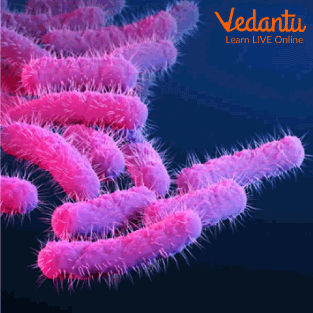
Kingdom Monera
There are different types of bacteria in this kingdom. Members of Monera are found wherever life is possible, such as in hot springs, under ice, on the deepest ocean floor, in the hottest and driest deserts, and in the bodies of other organisms. The wind can carry them away. They are in great numbers.
In 1683, Antony Van Leeuwenhoek of Holland, with the help of a microscope made by him, saw bacteria in tooth scraps and called them AnimalCules. For this reason, Leuwenhoek is called the Father of Bacteriology. In 1829, Ehrenberg named them bacteria (Scientific Name of Bacteria).
Bacteria Facts
Bacteria have been considered the first living organism on earth. They have been on the earth for the last 3 billion years.
The number of bacteria in your mouth is more than the total number of humans on earth.
The length of a bacteria ranges from 0.5 to 5 micrometres. They can be of any shape like round, circular or rod etc. (1 metre has 1 million micrometres).
Bacteria have the smallest eyes in nature but the largest in terms of body size.
There is not a single bacteria in the body of newborn babies.
The effect of chlorine in water lasts only for six months, after which bacteria start growing again in the water.
Parts of Bacteria
Bacteria can be a rod, spherical or coiled. Some bacteria grow as filaments (to which rod-like bacteria are attached, actinomycetes).
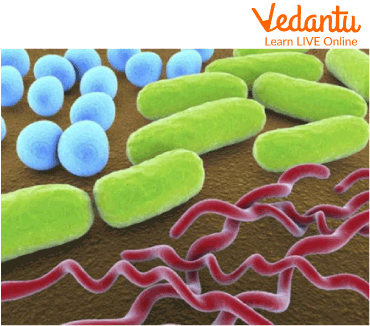
3 Common Shapes of Bacteria.
The bacterium lacks a true nucleus and receptor. Cocci-type bacteria have a diameter (of 0.5 – 2.5u). A drop of liquid can contain 50 million bacteria. In Bacillus types, the length of the bacteria is up to (3-15u).
Bacteria may or may not have small structures, such as flagella or hunter. They are used for swimming.
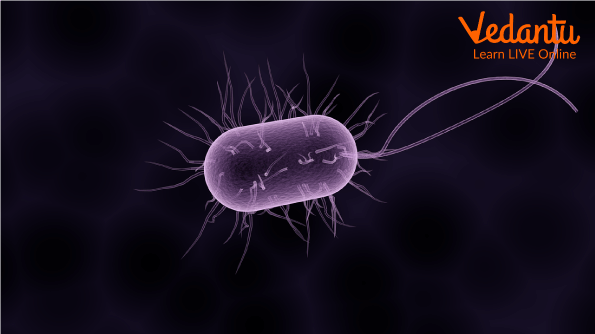
Flagella in Bacteria
Flagella can be on one or both ends of the bacterium, depending on the type of bacterium.
There are two types of bacteria based on structure and gram colouration: Gram-positive and Gram-negative.
On dyeing with violet colour, all the bacteria become blue and when these dyed bacteria are washed with alcohol by pouring a solution of Iodine-Potassium Iodide, then blue colour remains in some bacteria.
The bacteria which retain blue colour are called gram-positive bacteria and those which do not have blue colour are called gram-negative bacteria. After that, the gram-negative bacteria are coloured with another colour like safranin.
The substance of the cell wall of all eubacteria is murein or peptidoglycan.
It consists of polysaccharides that are cross-linked by chains of short amino acids.
Peptidoglycan has not been detected in any eukaryotes or archaebacteria.
In gram-negative bacteria, there is another surface above the peptidoglycan wall called the outer membrane.
It consists of lipopolysaccharide (a complex lipid-polysaccharide molecule) that is embedded in the membrane.
These cells have specific adhesive properties due to lipopolysaccharides.
This helps the bacterium stick to specific eukaryotic cells.
The internal structure of the bacterium can only be seen through the electron microscope by taking a thin cut of it.
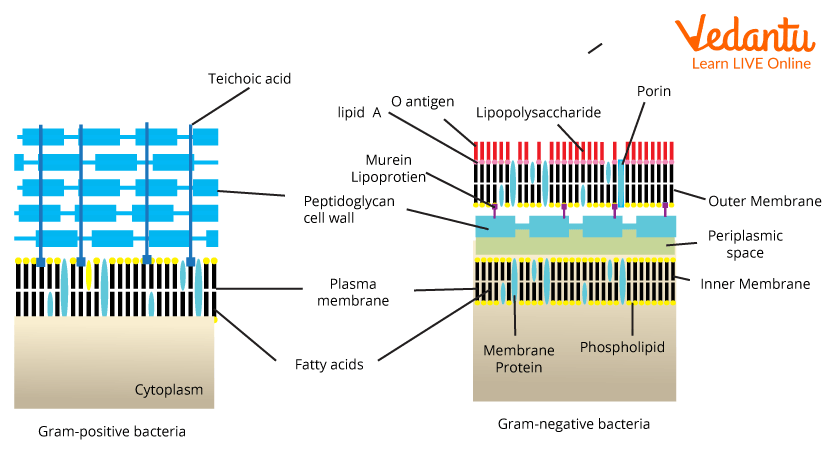
Peptidoglycan structure
The membrane-bound protoplasm is surrounded by a wall, due to the location of the ribosomes, the protoplasm appears double.
The ringed and coiled bacterial chromosomes (this is plain DNA) remain attached to the cell membrane at one point.
The base structure of the flagella is in the cell membrane where it can move, but it rotates when there is movement in the flagella that the bacterium moves.
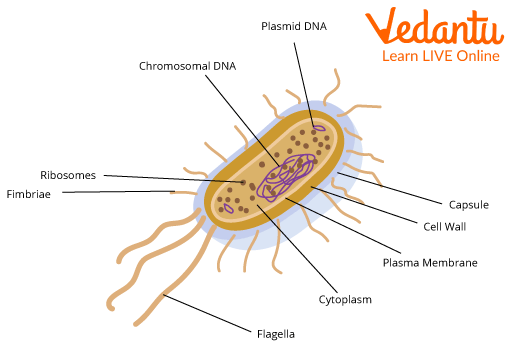
Internal Structure of Cell Membrane of Bacteria
Solved Questions
1. Who are the micro-organisms of Prokaryote Kingdom Monera?
Ans: Bacteria are the microorganisms of the prokaryotic kingdom Monera.
2. Which scientist is called the 'Father of Bacteriology'?
Ans: Antony van Leeuwenhoek is called the 'Father of Bacteriology'.
3. What is the material of all eubacteria cell walls?
Ans: Murine/Peptidoglycan is the material of all eubacteria cell walls.
Learning by Doing
What helps bacteria to stick to specific eukaryotic cells?
What is the approximate size of a bacterial cell?
In which cells the Peptidoglycan layer is present in large amounts?
Summary
Bacteria are unicellular organisms, although we cannot see them without a microscope. But there are one or two that can be seen with the naked eye. Bacteria are the oldest, smallest, simplest and most abundant micro-organisms of the prokaryotic kingdom Monera. There are different types of bacteria in this kingdom. Bacteria have been considered the first living organism on earth; they have been on the earth for the last 3 billion years. The number of bacteria in your mouth is more than the total number of humans on earth. Bacteria may or may not have small structures, such as flagella or hunter. The substance of the cell wall of all eubacteria is murein or peptidoglycan.
FAQs on Bacteria: Parts of Bacteria and Interesting Facts about Them
1. What are the examples of Bad Bacteria?
Some bad bacteria E=examples include the following:
Salmonella
Clostridium perfringens
Campylobacter
Staphylococcus aureus (Staph)
Norovirus
2. Gram on gram stain - what is the colour of positive bacteria?
The colour of positive bacteria is purple.
3. Which scientist did the first artificial culture of bacteria?
Robert Koch was the first scientist who created artificial bacteria.









